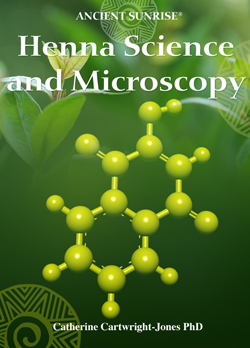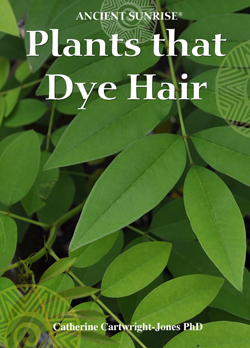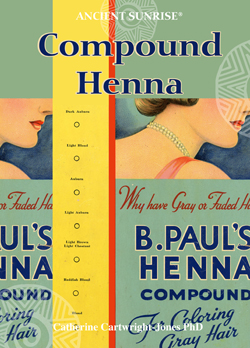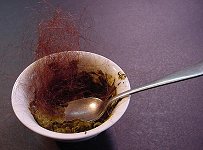Warnings!
|
Ancient Sunrise® henna will make your hair healthy and beautiful. If the henna you buy is an adulterated or contaminated henna product, it could ruin your hair. Here
is how henna got such a bad reputation after being adapted into western
countries and why you have to be careful about what you buy. |
| Nearly all henna available on the commercial market is "compound henna" which does NOT play
nice with
commercial hair dye and other chemical residue in hair. This is why henna has such a terrible reputation with stylists. Compound henna often reacts badly with synthetic hair dyes and other chemical hair products! If you use compound henna soon after you have done your hair with para-phenylenediamine dyes, your hair may be brittle, trashed, and may turn frog butt green or offshore sewage outlet black. Compound hennas have metallic salts which react disasterously with the ammonia in synthetic hair dye. Problem is ... many pre-mixed henna powders do NOT have these ingredients listed! 90% of all products claiming to be henna are adulterated, contaminated, and some have no henna whatsoever. Want to learn more about compound
henna? Go
here, bottom of the page. Henna
can be used over commercial hair dye and other chemical residue in
hair if it does not have metallic salts. Ancient Sunrise® henna does not
have metallic salts, and can be applied over synthetic dyes! How
do you know if you've got laboratory certified body art quality henna? Order Ancient Sunrise® henna from Mehandi! We prove the purity so you know what you are getting. |
This chapter contains the history of how the addition of metallic salts and oxidative dyes were added to henna in the 19th century to make henna more profitable and marketable in Europe and North America to people who had no traditional understanding of what henna is and how it is used. These additions created destructive cross-reactions with in with chemical hair dye, which were blamed on henna, as they were usually unlisted (or at least put in type too small to read). These adulterants also created as confusion about what henna actually is. Index of specific topic in this chapter: Pag 3: Compound henna, rasticks, henna-reng, henna-rasticks, and metallic salts Page 33: Henna mislabeling, misinformation and disinformation Page 50: Para-phenylenediamine and henna Page 87: Walnut, Silver Nitrate, and Para-phenylenediamine as Brunette Hair Dye |
| A product labeled "henna" may contain contaminants, adulterants, para-phenylenediamine, or ... no henna whatsoever. 90% of all products labeled 'henna' have contaminants or adulterants of one sort or another. Some henna products contain 30% or more para-phenylenediamine. Rapid
analysis of the skin irritant p-phenylenediamine (PPD) in henna
products using atmospheric solids analysis probe mass spectrometry
Weiyang Chena, Thobile. A.N. Nkosia, Sandra Combrincka, Alvaro. M. Viljoena, Catherine Cartwright-Jones Journal of Pharmaceutical and Biomedical Analysis, Volume 128, 5 September 2016, Pages 119–125 The only way to find out if YOUR henna will cooperate with YOUR chemical residue from synthetic hair products is to TRY SOME. Harvest hair from your hairbrush, mix up a sample of henna and try it. What's in some henna products that reacts badly with synthetic hair dye? Here's the low down and dirty about what's in some of these products!
|
 Ancient Sunrise® Chapter 4: Henna Science and Microscopy This chapter details the botany of henna, the phytochemistry of henna, and microscopy of henna in present and past production. Index of specific topic in this chapter:
Page 3: The Botany of Henna Page 17: The Phytochemistry of Henna Page 29: Microscopy of Products Labeled as "Henna" in Present and Past Commercial Production |
|
People are rarely allergic to henna. Do a spot test to be sure you're not allergic to pure henna. Mix 100% pure body art quality henna, such as Ancient Sunrise® henna with warm water. Wait an hour. Put a spot of henna on your inner arm. Wait an hour. If the spot doesn't itch after an hour, you are not allergic to henna. For more information, see: Allergies |
 Ancient Sunrise® Chapter 5: Plants that Dye Hair This chapter discusses henna, indigo, and cassia, (lawsonia inermis, indigofera tinctoria, and cassia obovata) and the chemistry of each of these dye plants. Understanding the botany of these plants will help you understand how to get the best results from your henna hair dye. |

